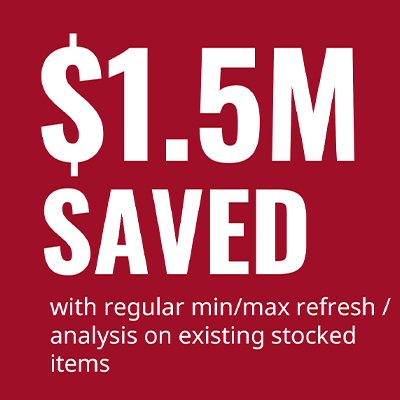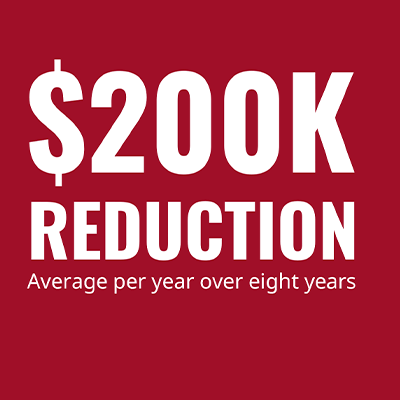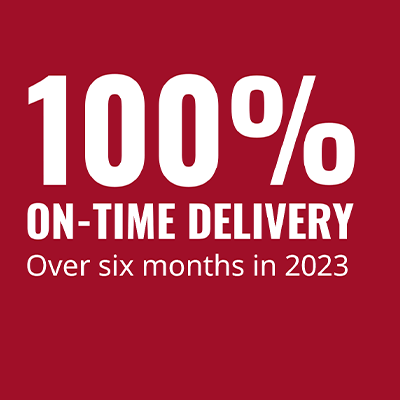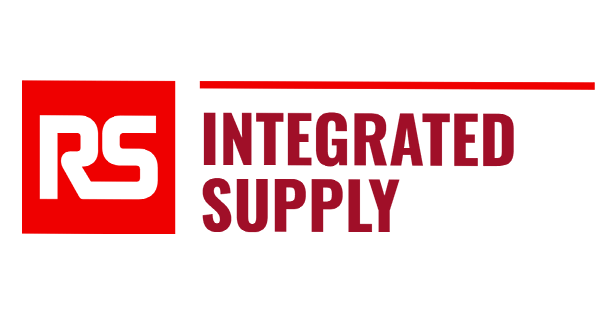Managing change is a big part of gaining control of the MRO supply chain and that change cannot happen unless there is a committed partnership where both client and integrator adapt to be successful.
How one reacts to such a hurdle defines a company and its culture.
In one case, a long-time packaging manufacturer changed its reporting structure, putting in place a new manager responsible for the MRO supply chain. Their initial reaction to learning that a third-party MRO integrator was managing the process was to propose a return to in-house management of their MRO storerooms.
The Challenge:
The change in reporting structure raised questions about what the integrated supply program provides and the value it brings to the client. The new manager required proof the incumbent integrator still provided value after seven years of service.
As a provider of fully integrated services, RS Integrated Supply serves as the custodian of the client’s data and can demonstrate the gains and improvements over the life of the contract, even when the client’s own managing data systems cannot. In this case, the length and depth of client engagement generated enough empirical evidence to support the integrator’s mission. Also, many of the initial team members still worked for the provider, meaning historical data was available for analysis by those who completed the initial work; this helped explain the “why” behind decisions made years ago which appear as anomalies in the data analysis.
The challenge was translating the historical record to today’s terms and understanding. Over the course of any client engagement, the calculus for material savings changes, priorities and focus areas evolve, as does the strategic direction of the provider. It means, for example, that the initial focus on piece-price savings changes as the price ceiling is gradually lowered. An integrator, as that point nears, should recognize that shift, pivot away from material savings and instead focus on processes and other areas where efficiencies are gained.
“When the client looks at RS integrated Supply, they see material savings, because that is what we initially were hired to do,” said one of the client account team members. “It is our responsibility to know their business inherently and introduce new savings opportunities and continuous improvements to continue driving those savings. That is exactly what we did.”
The Solution:
As the relationship matured, those material savings opportunities – the low-hanging fruit – dwindled, prompting RS Integrated Supply to identify special projects and other opportunities to improve the savings rate.
“We have to leverage the supply chain where we can, and introduce the depth of our full-service team, beyond the on-site account team,” said the account team member. This can include re-engineering the efficiencies of spare parts storage areas localized to production lines, implementation of new storage locations, improvements to logistical routes of parts ordered, increasing speed of requisitioning capabilities, preventative maintenance suggestions, wearable part analysis, etc.
RS Integrated Supply refocused its approach more on Total Cost of Ownership (TCO) of MRO materials and less on singular material costs. It meant that things like lead time, long-term usage trends, criticality (even when the client didn’t have a list of critical spares), and other variables had to be considered. It also meant that labor reduction, production downtime, more point-of-use storage concepts, and more predictive maintenance applications could also be proposed and implemented where needed.
While material savings are easier to calculate and report on, the TCO approach offered more depth to the actual savings. It opened the door for the introduction of continuous improvement, as well as cost avoidance opportunities at three client sites, including two that RS Integrated Supply staffs. There are 14 other sites that receive procurement support.
The Result:
The RS Integrated Supply team was able to demonstrate consistent savings earned since program inception. Among the performance metrics shared with the client were:
- Fill Rate
- Cycle Count Accuracy
- Inventory Reduction
- On-Time Delivery
- Material Savings
Fill Rate
Defined as the number of spare parts issued at the main storeroom window vs. the number of stockouts, poor fill rates are a symptom of potential trouble. In this case, program results have consistently achieved the target of 98%, frequently earning a 100% fill rate.
Cycle Count Accuracy
A staple of storeroom management best practices, cycle counting is the total number of bins counted in a month vs. the total number of adjustments required to correct deficiencies. After making one-time adjustments to clear inventory that no longer exists from the ERP system, RS Integrated Supply consistently achieved the target 98%.
Inventory Reduction
This metric is defined as a reduction in the total value of inventory listed in a single storage location. Through RS Integrated Supply’s program, the client averaged more than $200,000 in savings per year over an eight-year period.
On-Time Delivery
Defined as the total number of non-stock lines processed in the month vs. how many lines are late according to the need-by date. Target is 98% but COVID-related supply chain disruptions caused a dip. That metric has improved since those disruptions eased, with RS Integrated Supply attaining 100% On-Time Delivery for six consecutive months in 2023.
Material Savings
Calculated as the total savings on material costs measured against baseline unit price, material savings is one of the more important metrics early in any client relationship. As the low-hanging fruit of material savings is realized, program savings evolve to include additional metrics. This client averaged nearly $560,000 in material savings each year for seven years.
Since its inception, the RS Integrated Supply MRO program has amassed more than $4 million in total material savings, while introducing efficiency gains both on the production floor and elsewhere. For example, using RS Integrated Supply reduces the transactional burden companies face when dealing with vendors, potentially shrinking the workload for the client’s Accounts Receivable and Accounts Payable departments.




Among some examples of savings secured by the RS Integrated Supply team over the course of the contract:
- $1.5 million saved with regular min/max refresh/analysis on existing stocked items
- $117,000 reduction from the introduction of a vendor-managed inventory program
- $371 savings from the replacement of electrical fuses deemed non-compliant
- $8,778 savings from warranty enforcement
Meanwhile, the initial contract has grown to include two additional, three-year contract renewals.


